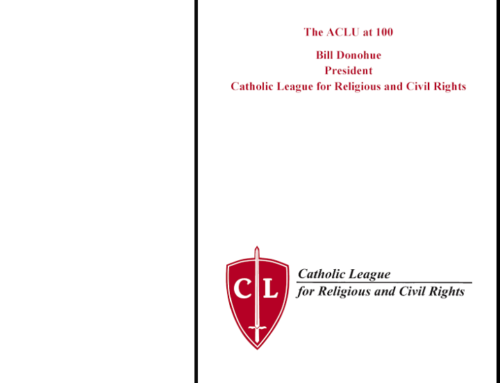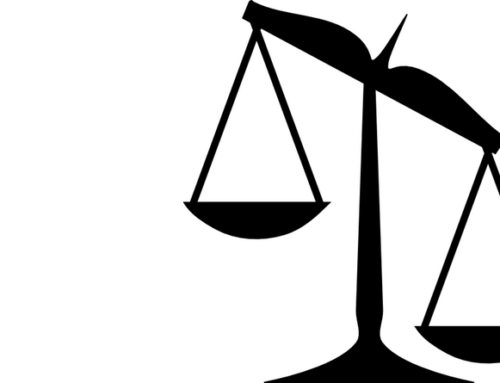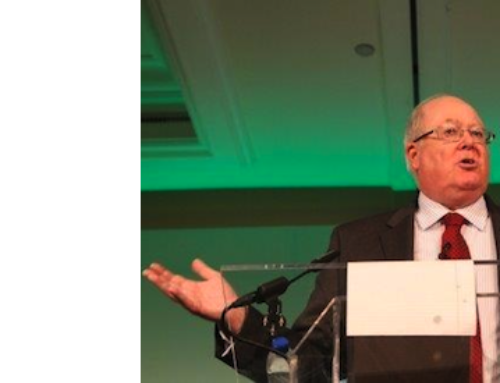This is a special report which was originally published in the September 2014 issue of Catalyst.
The Catholic Church has many enemies these days, some of whom are ex-Catholics who left the Church a long time ago. They are joined by the disaffected, those who pretend (even convincing themselves) that they are Catholics in good standing. Most of these malcontents are lay men and women, but some are priests, and a few are nuns. All of them are animated by a strong rejection of the Church’s teachings on sexuality. Because they have the support of the secular media, they comprise a formidable group.
What motivates them today is the debased desire to take down a bishop. Not any bishop: They want to drop a bishop who is an outspoken defender of the faith. They really get excited when they learn of a diocese that was riddled with dissidents and is now almost dissident free.
Geopolitics is at work, as well. While they will work overtime to disable a bishop anywhere in the nation, they prefer to scalp a bishop from the Mid-West. Why? Because that’s where many of them live. It’s also because it is easier for activists to dominate the news in mid-size cities, as opposed to larger ones where it is much more difficult. Their attacks are orchestrated and well-coordinated: lawyers feed the activists and they feed the media.
Cardinal Raymond Burke, formerly the Archbishop of St. Louis and now the prefect of the Vatican’s highest court, has drawn the enmity of Mid-Western dissidents for years. He is despised because of his denunciations of Catholic public figures who reject the Church’s teachings that bear on public policy issues. Burke’s critics have no problem with the Nancy Pelosis who continually claim their Catholic status while doing everything they can to undermine the Church. They have a problem with him.
New York Archbishop Timothy Cardinal Dolan hails from St. Louis and was the Milwaukee archbishop before coming to the Big Apple. He is hated because he cleaned up after his disgraced predecessor, Archbishop Rembert Weakland. Though Weakland embarrassed himself and the Church, he is still revered in left-wing Catholic quarters. He is liked because his views are similar to theirs.
They tried to take Dolan down because he moved the perpetual care fund, which was part of the regular archdiocesan accounts, to a cemetery trust fund. It did not matter that he was following the advice of his Financial Council; what mattered was that his enemies could play fast-and-loose with a contrived controversy. When Dolan moved to New York, they stayed on his trail. Terence McKiernan, the founder of BishopAccountability, pledged a few years ago to “stick it” to Dolan, and has accused him of “keeping the lid on 55 priests.” Several attempts by me challenging McKiernan to release the names have failed. It’s a lie and he knows it.
When Bishop John Myers of Peoria took over the Newark archdiocese, his enemies followed him. They went wild when it was learned that a priest was not being properly supervised after he had an encounter with a teenager 12 years earlier; he grabbed the boy while wrestling with him (in front of the boy’s mother). In fact, what was really bothering his critics were Myers’ strong positions on sexuality. The editorial page editor of the Newark Star-Ledger, an angry ex-Catholic, specifically took umbrage with Myers for his defense of “marriage and life.”
Bishop Robert Finn of Kansas City-St. Joseph inherited a mess made by dissidents and cleaned it up. That made him a target. His enemies seized on the antics of a disturbed priest who took crotch-shot pictures of kids. It is important to note that the review board was contacted, the authorities were notified, and an independent investigation was ordered. But because much more offensive photos were later taken, Finn was found guilty of one misdemeanor for not reporting suspected child abuse. Had he done nothing, no one would have known about the priest because there was no complainant. No matter, they wanted his head and are still after him.
St. Louis Archbishop Robert Carlson was recently the victim of a campaign by anti-Catholics who tried to frame him. Their goal was to promote the pernicious idea that he did not know that child abuse was against the law. It failed, but what counts is that they tried. Because Carlson fought back, and because he rejects the libertine ideas of his critics, they sought to bring him down.
No one has endured a more vicious assault on his character than John Nienstedt, Archbishop of St. Paul and Minneapolis. Before examining his case, it is time to disclose who the principal players are in this quest to scalp a bishop.
Attorney Jeffrey Anderson, the Survivors Network of Those Abused by Priests (SNAP), and the National Catholic Reporter are leading the charge. Anderson is from St. Paul, SNAP honcho David Clohessy lives in St. Louis, and the Reporter’s home is Kansas City, Missouri. All of them find a sympathetic ear with the media.
The Kansas City Star, the Minneapolis Star Tribune, and the St. Louis Post-Dispatch are their biggest fans. Outside of the Mid-West, they have friends at the New York Times, Boston Globe, National Public Radio and Commonweal magazine; the latter has become increasingly strident.
Anderson is a tiny man with a big ego. A recovering alcoholic, he once described himself as a “dedicated atheist.” His goal, he has admitted, is to “sue the s*** out of them” [the Catholic Church]. He has made good on his pledge; he is one of the richest lawyers in the nation. While he likes to sue Mid-Western bishops, the big prize for him remains the pope; several attempts to implicate the Vatican have failed.
In August, SNAP gave Anderson an award for his work. Or was it for his money? It is a matter of record that Anderson has lavishly greased Clohessy’s efforts. David Clohessy, who indicts bishops for not reporting the slightest boundary violation to the authorities, never called the cops when he learned that his brother, a priest, was accused of molesting a minor. He also admits to lying to the media, though that has cost him nothing.
Four years after the National Catholic Reporter was launched, it came under attack by its Ordinary, Bishop Charles Herman Helmsing, for its “poisonous character” and attacks on the Church. He said the paper had no right to claim the title “Catholic,” a view that is not uncommon among many bishops today. Indeed, some experts maintain that the use of “Catholic” in its title is canonically illicit. The Reporter does not support the Church’s teachings on sexuality, and it gives voice to those seeking to undermine the Church’s hierarchy.
These are the main protagonists in the war on bishops, and they are the ones who have Archbishop Nienstedt in their sights. Along with Minnesota Public Radio and other media outlets, their pursuit of a bishop’s scalp is so transparent that no objective observer could conclude otherwise.
Nienstedt got off on the wrong foot with these people when he took over from Bishop Raymond Lucker in New Ulm. He inherited a cadre of committed National Catholic Reporter types and moved with dispatch to restore order. There was much to clean up. Consider that Lucker wrote a book prodding the Church to change its teachings on 15 issues, including homosexuality. When he learned of a priest who had molested a minor, Father Francis Markey, Lucker moved him to another parish and school. Markey was a drug addict and a homosexual who preyed on teenage boys. By contrast, it took Nienstedt to discipline another miscreant priest soon after he took over from Lucker; he placed him on administrative leave without faculties.
Not surprisingly, Lucker liked the dissident priest character in the ABC-TV show “Nothing Sacred.” Indeed, he loved the show so much that he signed a newspaper ad in the late 1990s condemning me for boycotting the show’s sponsors. Bishop Thomas Gumbleton, who attends SNAP conferences, also signed the letter. Cardinal Roger Mahony also liked the show: He gave the actor who played Father Ray an award. No media outlet worshipped the show more than the Reporter. When we killed the show, a dissident Brooklyn nun held a prayer vigil commemorating her loss.
Bishop Lucker is relevant to the Nienstedt story because those out to get the archbishop never showed any interest in sacking his predecessor. As long as a bishop adopts the right positions, as defined by left-wing haters and angry ex-Catholics, he will get a pass, no matter what his record is. This is the real cover-up.
If there were two triggers that ignited the assault on Nienstedt it was his public defense of marriage, properly understood, and his criticism of the pro-homosexual film, “Brokeback Mountain.” Had he said nothing about a ballot initiative recognizing the right of two men to marry, and had he been equally agnostic on the gay cowboy movie, he never would have been targeted by the Church’s enemies.
It is against this backdrop that, out-of-the-blue, Nienstedt was accused of touching a boy’s behind when posing for a group photo; the archbishop stepped down and called for an investigation. No other leader, religious or secular, would ever do so. Of course, he was exonerated. Then came more accusations, dating back many years ago, that he engaged in improper behavior with seminarians and priests (an ex-priest surfaced charging that Nienstedt once touched his neck). Again, the archbishop called for a probe, this time hiring a respected law firm.
From my perspective, there were two disturbed priests, both homosexuals, who should have been treated differently; their acting out occurred before Nienstedt took over. Red flags were ignored, and in one case, the fact that the priest was a homosexual actually redounded to his favor (they didn’t want to out him). One of these two offending priests was permanently removed from ministry in the fall 2012, and the other was put on a leave of absence in the spring 2013 (he is not involved in ministry pending the completion of an investigation).
In October 2013, Nienstedt said, “There are no offending priests in active ministry in our archdiocese.” This was disputed by Jennifer Haselberger, a canon lawyer who resigned from the archdiocese earlier that year. As it turned out, Nienstedt did not lie, but neither was he accurate. He did not know that two priests who had been accused of “boundary violations” were still in ministry. Their inappropriate behavior was not criminal and did not involve sexual abuse. Still, their status became a source of controversy. Two months later they agreed to a leave of absence; this was subsequent to a review by a Los Angeles firm, hired by the archdiocese, to see if there were any active clergy members in ministry with allegations against them.
In 2014, Nienstedt learned of an accused priest who escaped supervision. Though the priest was told not to celebrate Mass, he occasionally did so on weekends. He retired in 1998, and was the subject of allegations made against him in the 1980s about inappropriate behavior dating back to the early 1960s. As soon as Archbishop Nienstedt found out about this priest’s violation of trust, he had his faculties removed.
These constitute missteps, but they hardly justify the hysterical reaction against Nienstedt that has taken place. Media reports would have us believe that Nienstedt was involved in a major cover-up of known child molesters. This is patently false and a disservice to a great man. No, his big sin is his orthodoxy, not his decision-making. It is he who has been victimized: anonymous accusers, angry former employees, and a cadre of militants, are out to level him.
Haselberger is the darling of Commonweal, Minnesota Public Radio, and SNAP; she spoke at the latter’s conference in August. It is a source of great irony that she was suspended by the archdiocese for failing to deal expeditiously with a complaint, yet her signature complaint against the archdiocese is that it didn’t move expeditiously to deal with accused priests.
Over the summer, Haselberger submitted an affidavit to Anderson claiming to have endured “months of harassment, threats, and intimidation”; she pledged to provide examples. In fact, she provided not a single example of being threatened by anyone, and the examples that she offered of being harassed and intimidated are so weak they only work to undermine her credibility. Moreover, even she admits to at least 17 occasions where her version of events differed with that of her co-workers.
A week before Haselberger gave her affidavit, Commonweal printed a lengthy article detailing what she told them: the archbishop was under investigation for inappropriate sexual conduct with seminarians and former priests. Nienstedt announced the investigation on the same day, July 1, claiming innocence. She leaked this information after having learned of it from the law firm that was conducting an investigation, a probe initiated by Nienstedt.
Exactly one week after Haselberger’s uncontested affidavit was taken, Minnesota Public Radio aired a documentary that featured all the familiar players, complete with piped-in melodramatic music. For an outlet that prides itself on objectivity, it was nothing but a left-wing hit job. That teed things up for Anderson, who conveniently released Haselberger’s statement the next day. The day after that, Laurie Goodstein published her story in the New York Times, and two days later her newspaper published a scathing editorial on Nienstedt. On the same day, July 18, two journalists, one from the National Catholic Reporter, called for the archbishop to resign. This set the tone for Minnesota newspapers which then called for him to resign.
We decided to do a little investigating of our own: I asked the staff to research the internal policies that these media outlets have on employee misconduct, including violations of the law. A senior PR person from the Star Tribune initially got back to us saying we would hear from someone in the editorial office. But no one ever contacted us.
The St. Cloud Times is a Gannett paper, and the parent company has a policy on what to do when an employee learns of “violations of the law or Company policy.” It says nothing about reporting law violations to the authorities; all they need to do is report illegalities to their supervisor. The New York Times is the most shameless of them all.
The Times has a Business Ethics Policy that if adopted by the bishops would lead to calls for their mass resignation. “Any employee who becomes aware of any conduct that he or she believes to be prohibited by this Policy or a violation of the law…is expected to promptly report the facts forming the basis of that belief or knowledge to any supervisor of the legal department.” (My italics.) In other words, crimes of sexual harassment need not be reported to the authorities. Now what if a false accusation is made against a fellow employee? They are subject “to discipline up to and including termination.” The bishops should adopt this policy.
If this isn’t hypocritical enough, consider that the former head honcho of the BBC, Mark Thompson, was made president and CEO of the New York Times after it was disclosed that he was told of a cover-up: a scheduled BBC documentary on BBC icon and serial child rapist Jimmy Savile was spiked for political reasons. Thompson wanted nothing to stop his quest to land the coveted Times job, so he played dumb. But we subsequently learned that he knew all about the decision to nix the film.
Nienstedt has tried to reach out to the media to tell his side of the story, but what interests them is not his account, it is his sexuality. To be exact, they want to know what he does in bed, and with whom: three media outlets questioned him about his sexual behavior. He told the Star Tribune, “No, I’m not gay. And I’m not anti-gay.” When asked by the Pioneer Press if he had had sex with men since becoming archbishop, he said, “No. Not even before.” A homosexual reporter for KMSP, Fox 9 Minneapolis, also asked the archbishop about his sexuality.
Those out to get Nienstedt cannot be shamed, but they can be stopped. Unfortunately, too many Catholic activists and writers who know he is being railroaded have gone mute. This must end. We cannot stand by and watch these anti-Catholic zealots carry the day.









